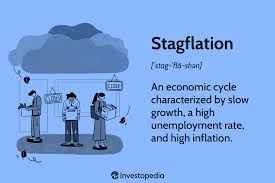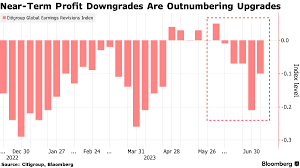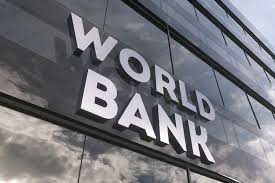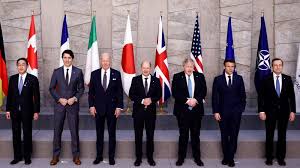Business
Featured
Global Economy at a Crossroads: Stagflation Fears Mount as Growth Slows and Trade Tensions Rise
Editor
Jun 20, 2025
min read
9 views

The global economy is navigating a treacherous path in mid-2025, caught between the Scylla of sputtering growth and the Charybdis of persistent, albeit moderating, inflation. Major international financial institutions, including the World Bank and the Organisation for Economic Co-operation and Development (OECD), have sounded the alarm in their recent outlooks, forecasting the weakest half-decade of GDP growth in 30 years. This sobering assessment comes as a confluence of factors – from geopolitical conflicts and tightening financial conditions to rising trade protectionism – casts a long shadow over the prospects for a robust recovery.
At the heart of the current economic malaise is a synchronized global slowdown. The post-pandemic rebound has largely fizzled out, and the world's major economic engines are struggling to maintain momentum. In advanced economies, central banks' aggressive monetary tightening to combat soaring inflation has had the intended effect of cooling demand, but it has also raised the risk of recession. The Eurozone, in particular, remains fragile, grappling with the lingering effects of the energy crisis and the war in Ukraine. The United States has shown more resilience, but even there, growth is expected to decelerate as the effects of higher interest rates work their way through the economy.
Emerging markets and developing economies (EMDEs) face a particularly daunting set of challenges. While some, like India, continue to exhibit strong growth, many others are struggling with high debt levels, currency depreciation, and diminished capital inflows. The World Bank has highlighted the plight of the world's poorest countries, where the slowdown in growth is reversing years of progress in poverty reduction. The double whammy of slowing global demand and higher borrowing costs is squeezing these economies, leaving them with little fiscal space to invest in critical areas like health, education, and climate adaptation.
Compounding these cyclical headwinds are structural shifts that could have long-term consequences for the global economy. The rise of trade protectionism is a major source of concern. The era of hyper-globalization appears to be over, replaced by a more fragmented and competitive landscape. The ongoing trade disputes between the United States and China, as well as a more general trend towards 'friend-shoring' and industrial policy, are disrupting global supply chains and raising costs for businesses and consumers. The OECD has warned that escalating trade tensions could shave a significant percentage off global GDP in the coming years.
Another significant challenge is the ongoing fight against inflation. While inflation has peaked in most countries, it remains stubbornly above central bank targets. This has created a difficult dilemma for policymakers. Raising interest rates further to bring inflation firmly under control risks tipping economies into recession, while cutting rates prematurely could reignite price pressures. This delicate balancing act is being complicated by geopolitical factors, such as the recent escalation in the Middle East, which have injected fresh volatility into energy and commodity markets.
The current economic environment has revived fears of stagflation – a toxic mix of stagnant growth and high inflation. While a full-blown repeat of the 1970s stagflationary spiral is not the baseline forecast, the risk is no longer negligible. For businesses, this environment of uncertainty makes long-term planning difficult, leading to a pullback in investment. For households, the combination of slowing wage growth and rising living costs is eroding purchasing power and fueling social discontent.
In response to these challenges, international institutions are calling for a renewed commitment to multilateralism and a series of coordinated policy actions. The World Bank is urging advanced economies to provide more financial support to developing countries, particularly in the form of debt relief and climate finance. The OECD is calling on governments to resist the lure of protectionism and to double down on structural reforms that boost productivity and resilience. These include investments in digital infrastructure, education, and the green transition.
However, the political will for such cooperation appears to be in short supply. Rising nationalism and a focus on domestic priorities are making it harder for countries to find common ground on global challenges. The upcoming G7 and G20 summits will be a critical test of whether the world's leading economies can put aside their differences and forge a collective response to the growing economic storm clouds.
The road ahead for the global economy is likely to be bumpy. A 'soft landing' – where inflation is brought under control without a major economic downturn – is still possible, but the runway is narrowing. The decisions taken by policymakers in the coming months will be crucial in determining whether the world can navigate this perilous period and return to a path of sustainable and inclusive growth, or whether it succumbs to a prolonged period of economic stagnation and instability.
Editor
League Manager Editorial Team






Leave a Comment